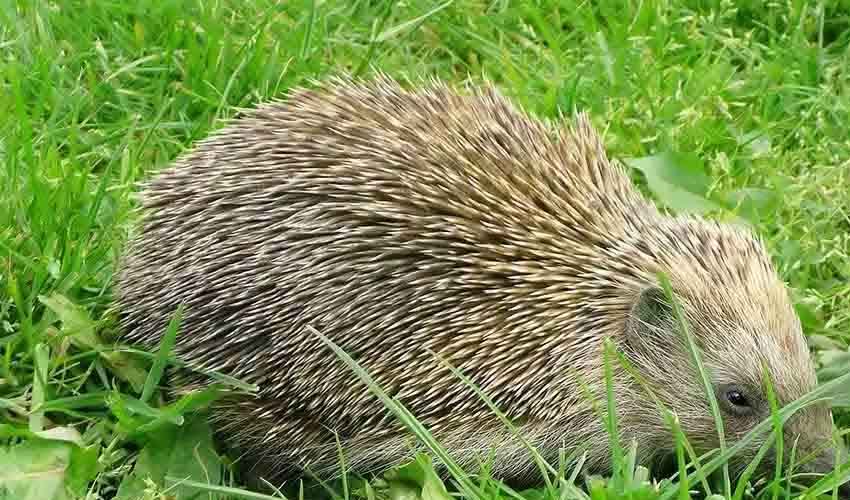Distinct from its close relative, the European hedgehog, this species is immediately recognizable by the striking white patch adorning its chest, serving as a natural insignia that sets it apart from other hedgehog species.
As a nocturnal creature, the Southern white-breasted hedgehog embarks on its nightly forays guided by an exceptional sense of smell and acute hearing. These senses are crucial for navigating through the darkness, locating prey, and evading predators. Despite its poor eyesight, this hedgehog efficiently hunts a variety of invertebrates, including insects, worms, and snails, as well as occasionally venturing into the realm of small vertebrates. This diet underscores its role in the natural control of pest populations, contributing to the ecological balance of its habitat.
One of the most iconic defenses in the animal kingdom is the hedgehog’s ability to roll into a protective ball, presenting a formidable barrier of sharp spines to potential predators. This defense mechanism is shared by the Southern white-breasted hedgehog, which utilizes its spines not only as a deterrent but also as a key aspect of its survival strategy. Unlike the European hedgehog, which often digs dens for shelter, this species demonstrates a preference for constructing grass nests in hidden, sheltered locations. This behavioral trait reflects the hedgehog’s adaptability and resourcefulness in creating a safe haven within its environment.
An interesting facet of the Southern white-breasted hedgehog’s biology is its ability to hybridize with the European hedgehog. This interspecies interaction results in offspring that possess a blend of characteristics from both parents, showcasing the genetic fluidity and complexity within the hedgehog genus. The occurrence of such hybridization not only raises intriguing questions about the evolutionary relationships between these species but also highlights the importance of understanding the dynamics of hedgehog populations and their habitats.
Distribution
 Armenia
Armenia Azerbaijan
Azerbaijan Belarus
Belarus Georgia
Georgia Iran
Iran Israel
Israel Lebanon
Lebanon Russia
Russia Syria
Syria Turkey
Turkey Ukraine
UkraineAnything we've missed?
Help us improve this page by suggesting edits. Glory never dies!
Suggest an editGet to know me
Terrestrial / Aquatic
Altricial / Precocial
Polygamous / Monogamous
Dimorphic (size) / Monomorphic
Active: Diurnal / Nocturnal
Social behavior: Solitary / Pack / Herd
Diet: Carnivore / Herbivore / Omnivore / Piscivorous / Insectivore
Migratory: Yes / No
Domesticated: Yes / No
Dangerous: Yes / No






